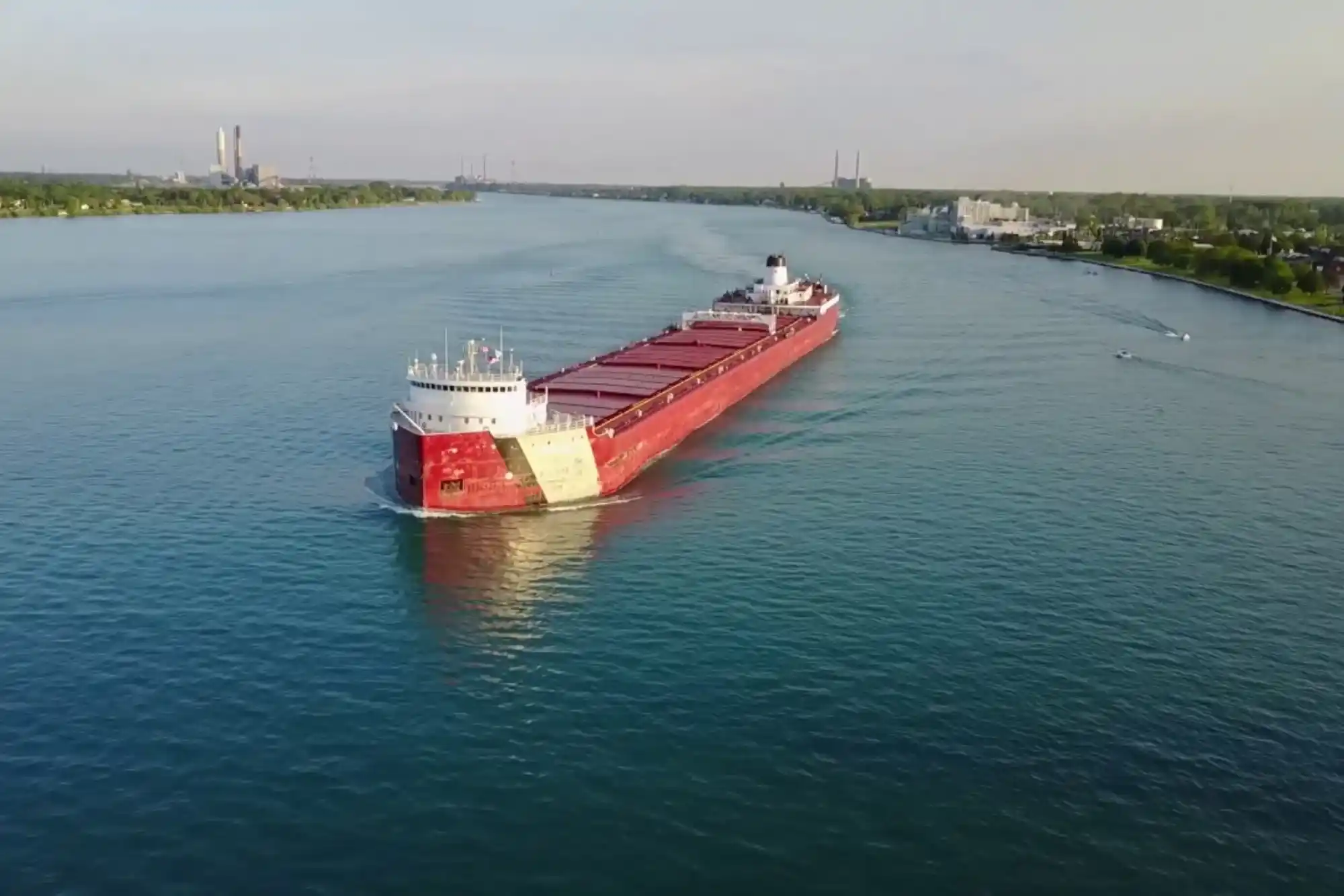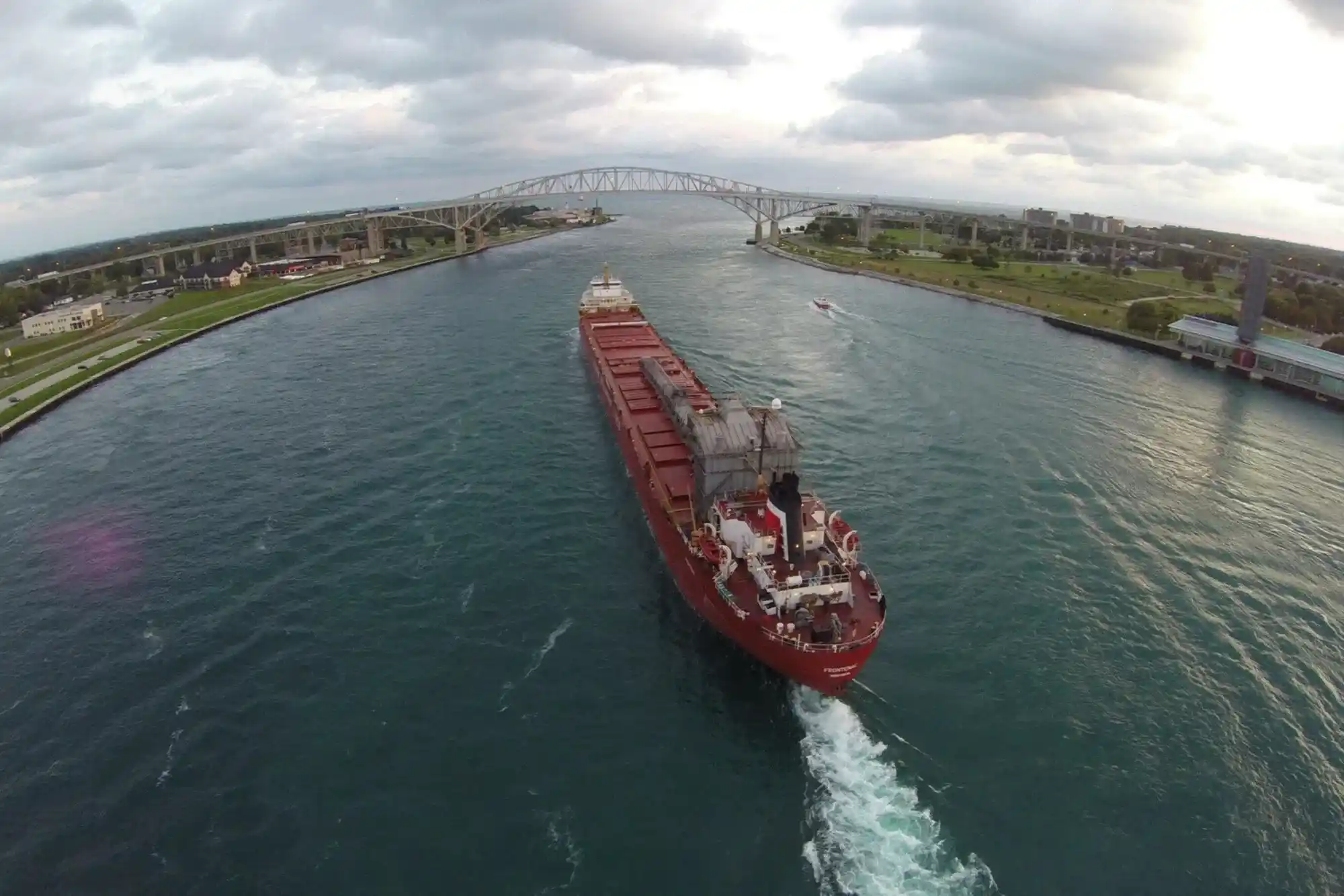The St. Clair River, an essential waterway in North America, serves as a bustling route for freighters transporting goods between Lake Huron and Lake Erie. This waterway sees constant movement, with freighters navigating the river to carry essential commodities such as coal, grain, iron ore, and various manufactured goods.
Understanding the freighter schedule on the St. Clair River is vital for both industry insiders and enthusiasts hoping to catch a glimpse of these enormous vessels. This article provides insights into the current freighter schedules, key transit routes, factors affecting freighter timing, and prime locations to observe the massive vessels along this iconic waterway.
Overview of the St. Clair River and Its SignificanceThe St. Clair River stretches approximately 40 miles, forming part of the international boundary between the United States and Canada. Flowing southward from Lake Huron into Lake St.
Understanding the Freighter Schedule
Freighter schedules on the St. Clair River are determined by various factors, including cargo demand, weather conditions, water levels, and seasonal variations. Schedules are organized to optimize the movement of goods, and captains work closely with marine traffic controllers to ensure safe passage.
Factors Influencing the Schedule

Cargo Demand
Freighters are scheduled based on cargo availability and destination demand. Industries relying on commodities, such as iron and coal, dictate much of the freighter timing.
Weather Conditions
Adverse weather, such as storms and heavy fog, can impact freighter schedules. Inclement weather conditions may result in delays, as freighters prioritize safety while navigating the river.
Water Levels
Fluctuations in water levels due to seasonal changes or environmental factors can influence freighter traffic. High water levels generally allow for more efficient movement, while lower levels may slow down the navigation process.
Traffic and Seasonal Variations
Summer and early fall are typically busier seasons on the St. Clair River. Increased traffic during these times may lead to slight adjustments in schedules, especially if the river is crowded with recreational vessels.
Coordinated Shipping Routes
Freighter traffic is organized through designated shipping lanes that span the length of the St. Clair River. To maintain efficiency and safety, vessels traveling northbound toward Lake Huron generally follow the western edge of the river, while southbound vessels stick to the eastern side. This lane designation helps prevent traffic congestion and allows freighters to pass each other smoothly.
Typical Freighter Schedule for the St. Clair River
Though the schedule can vary based on daily conditions, the general timing for freighters on the St. Clair River adheres to regular intervals. Below is a basic table outlining an example freighter schedule, focusing on key points and average transit times.
| Route | Frequency | Approximate Time of Day | Transit Duration |
|---|---|---|---|
| Lake Huron to St. Clair | Every 4-6 hours | Early Morning (2 AM – 6 AM) | 3-5 hours |
| St. Clair to Lake Erie | Every 6-8 hours | Late Morning (9 AM – 12 PM) | 4-6 hours |
| Return to Lake Huron | Twice Daily | Afternoon (1 PM – 5 PM) | 3-5 hours |
| Evening Southbound | Once Daily | Evening (6 PM – 9 PM) | 4-6 hours |
This table represents an average schedule and may vary due to the factors discussed earlier. Tracking applications, such as MarineTraffic and BoatNerd, are helpful resources for real-time updates on freighter schedules along the St. Clair River.
Best Viewing Spots for Freighter Watching

The St. Clair River offers several excellent locations for freighter enthusiasts. These spots are often popular for watching the freighters navigate tight river bends or pass under significant bridges, creating a dramatic and awe-inspiring view. Here are some top freighter-watching spots along the river:
Blue Water Bridge
Located at the mouth of the St. Clair River near Port Huron, Michigan, and Sarnia, Ontario, the Blue Water Bridge provides an ideal vantage point for watching freighters as they enter or exit Lake Huron. The bridge area also has parks and viewing platforms, making it convenient for enthusiasts.
Pine Grove Park
Pine Grove Park in Port Huron is a popular freighter-watching location offering unobstructed views of the river. The park is situated close to the riverbank, allowing for excellent views of the freighters as they pass by. Many visitors bring binoculars and cameras to capture the vessels in action.
St. Clair River Trail
For those looking for a longer viewing experience, the St. Clair River Trail in Ontario runs alongside the river for several miles. This trail allows freighter watchers to move along with the vessels and view them from multiple perspectives.
Tools and Resources for Tracking Freighters
Several online resources allow enthusiasts to keep track of real-time freighter movements along the St. Clair River:
- MarineTraffic: This website provides live vessel tracking and detailed information on individual freighters. Users can search for specific ships and check their location, direction, speed, and estimated arrival times.
- BoatNerd: A popular resource among Great Lakes freighter watchers, BoatNerd offers news, images, and a tracking tool specific to Great Lakes vessels.
- AIS (Automatic Identification System): AIS technology is used to track vessels worldwide. Many websites and apps offer AIS data, providing freighter locations and helping users stay updated on their schedules.
The Importance of Freighter Schedule Awareness
For both safety and economic reasons, an organized freighter schedule on the St. Clair River is essential. The river’s narrow passages and the presence of bridges require freighters to follow precise timings to avoid congestion and collisions. Coordinated schedules help in maintaining a steady flow of goods across the Great Lakes, benefiting industries and consumers alike. Furthermore, recreational boaters and anglers along the St. Clair River can benefit from understanding freighter schedules to avoid conflicts and enjoy safe navigation.
Seasonal Variations and Effects on Freighter Movements
The freighter schedule on the St. Clair River is influenced by the seasons, with the busiest period typically occurring between April and October.
During winter, icy conditions and shorter daylight hours may slow down traffic, and in some cases, certain sections of the waterway may be closed to freighters due to thick ice. Seasonal maintenance and repairs on vessels and bridges also impact freighter schedules.
Winter Navigation Challenges
Navigating the St. Clair River in winter is challenging due to ice buildup. While some freighters are equipped with ice-breaking capabilities, many vessels adjust their schedules to avoid the thickest ice, resulting in fewer freighters on the river during this time.
FAQs About Freighter Schedule on the St. Clair River
What types of goods are transported on the St. Clair River?
Freighters on the St. Clair River transport various goods, including iron ore, coal, grain, and manufactured products essential for industries across the Midwest and beyond.
Are there real-time tools to track freighters on the St. Clair River?
Yes, several tools, such as MarineTraffic, BoatNerd, and AIS tracking systems, provide real-time updates on freighter locations along the river.
What are the best locations to watch freighters on the St. Clair River?
Popular freighter-watching spots include the Blue Water Bridge, Pine Grove Park, and various points along the St. Clair River Trail in Ontario.
How often do freighters pass through the St. Clair River?
Freighter frequency varies based on demand and season but typically follows a regular schedule, with vessels passing every few hours.
Do freighter schedules change in winter?
Yes, winter conditions impact freighter schedules, as icy waters can slow down or limit navigation. Freighter traffic generally decreases in winter, with some routes temporarily closed.
The freighter schedule along the St. Clair River plays an essential role in the smooth movement of goods within the Great Lakes region. With well-coordinated shipping lanes, effective tracking tools, and designated watching spots, both industry professionals and freighter enthusiasts can stay informed about freighter movements along this iconic waterway.
By understanding the schedules, factors influencing freighter timing, and the best places to observe these massive vessels, anyone can fully appreciate the importance of this crucial transportation route.
Whether you’re tracking the latest shipment or simply watching these giants glide by, the St. Clair River’s freighter schedule offers a fascinating glimpse into the vital world of waterborne trade.




